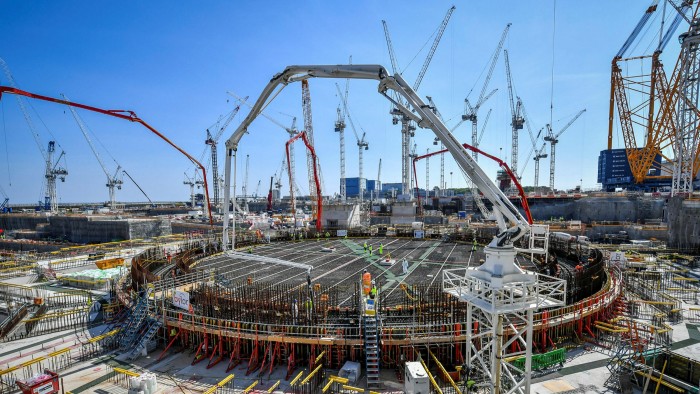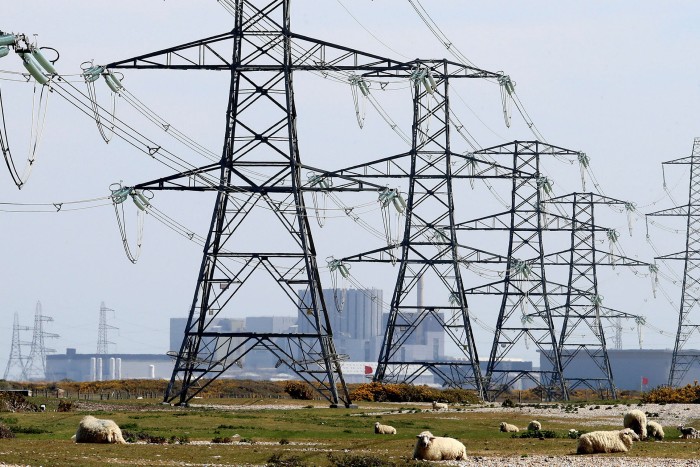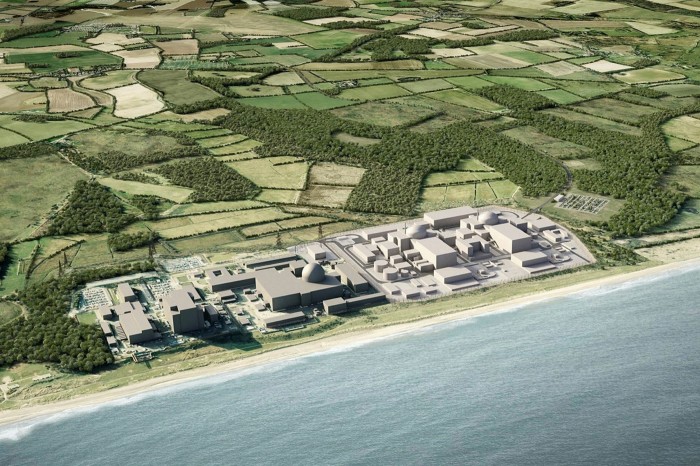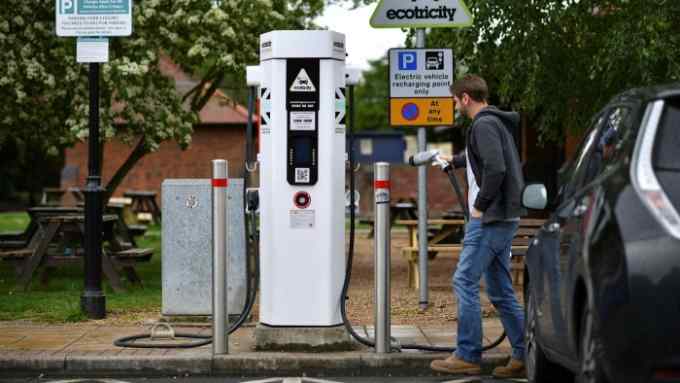UK’s ageing reactors bring nuclear question to a head

Roula Khalaf, Editor of the FT, selects her favourite stories in this weekly newsletter.
A remote area on England’s east coast, halfway between the seaside towns of Felixstowe and Lowestoft, is set to become the centre of debate about Britain’s future energy security.
UK ministers are aiming to bring forward legislation in the autumn to support the financing of a 3.2 gigawatt nuclear power station in Sizewell, East Suffolk, which could generate electricity for 6m households.
Ministers have been in formal negotiations with EDF about how to fund the proposed £20bn Sizewell C plant since December, and the government and the French state-backed utility have had discussions about replacing Britain’s ageing nuclear reactors for years.
However, the question of whether Britain should build more large plants took on added urgency last month, when EDF closed the 1.1GW Dungeness B station in Kent seven years early. It also raised the prospect that other reactors may also be decommissioned ahead of schedule, owing to problems with their graphite cores.
Dungeness B was one of eight nuclear power stations built in the UK between the late-1960s and mid-1990s and six more of these are due to retire before the end of 2030.

Some energy experts say this will leave a gap in Britain’s supplies of low-carbon electricity as the UK government strives to meet its 2050 “net zero” emissions target. According to the government’s climate advisers, Britain’s electricity system needs to be decarbonised by 2035 to reach that 2050 goal.
Only one replacement plant, the 3.2GW Hinkley Point C in Somerset, is currently under construction after the UK government failed to reach agreement in 2019 with Japan’s Hitachi over financing a new plant in north Wales. Toshiba also scrapped plans in 2018 for a new nuclear station in Cumbria.
“The UK has made great strides in decarbonising its power sector in recent years but the forthcoming retirements of old nuclear stations could halt that progress, or even send it into reverse,” warns Simon Virley, lead energy partner at KPMG UK, who was the government’s director-general for energy markets and infrastructure between 2009 and 2015.
Nuclear opponents dismiss these fears, though — arguing that several existing reactors had already been offline in recent years, and emissions still fell. For example, Dungeness B had not operated since September 2018 as EDF tried to solve problems that included corrosion in its pipework.
“If there was [a capacity issue], what good is Sizewell going to do given it won’t come on line until 2034 according to EDF?” asks Stephen Thomas, emeritus professor of energy policy at the University of Greenwich.
Nuclear sceptics have long argued that money would be better spent on clean energy technologies, such as offshore wind, and reducing electricity demand through measures including insulation.
Funding is likely to be key to whether any new plants go ahead.

Hitachi decided its Wylfa Newydd scheme in Wales posed too big a commercial risk even though the UK government offered to take a one-third equity stake.
Now, EDF’s hopes for Sizewell C rest on an agreement that involves a “regulated asset base” model, a mechanism that has never before been used for nuclear but is common in other infrastructure, including the Thames Tideway “super sewer” in London.
Under a RAB model, consumers would pay towards a new plant through their energy bills long before any electricity is generated. Opponents of the model warn that consumers would also be on the hook for cost overruns.
But nuclear executives insist the model would help to attract low-risk investors, such as pension funds, and cut the cost of capital of a new plant — a significant proportion of the budget.
They suggest an agreement over financing Sizewell C could involve the UK government and EDF taking minority stakes to provide confidence to private investors, although the campaign group Stop Sizewell C has questioned how many pension funds are willing to back nuclear, given that several have expressed reservations.
EDF Energy, the French utility’s UK division, says “there are plenty of investors . . . who have indicated their interest in financing Sizewell C” and Simone Rossi, its chief executive, told a Reuters event last month that legislation was “an essential prerequisite”.
Still, others remain privately sceptical given a consultation on a RAB model was launched two years ago with little progress since. Ministers have also acknowledged a RAB-financed nuclear plant could end up on the government balance sheet.
Questions also remain over what role Chinese state-backed CGN will play in Sizewell C. It has a 20 per cent share during the development phase, but some backbench MPs have questioned China’s involvement in critical UK infrastructure. CGN declined to comment.
Twice weekly newsletter

Energy is the world’s indispensable business and Energy Source is its newsletter. Every Tuesday and Thursday, direct to your inbox, Energy Source brings you essential news, forward-thinking analysis and insider intelligence. Sign up here.
The UK business department says it “is continuing to explore” a RAB funding model “alongside other delivery models”.
Francis Livens, a professor at Manchester University’s Dalton Nuclear Institute, says there is a “problem of objectivity” in the debate around nuclear, as well as other energy technologies.
A lot of “stereotypical stuff” such as electricity supply gaps dominate the debate, he argues — and rarely are technologies assessed for their overall potential to replace fossil fuels, such as also providing heat and producing hydrogen.
Says Livens: “I’m not sure any of these energy technologies [including wind and solar] are being properly evaluated using a whole systems approach.”

Comments